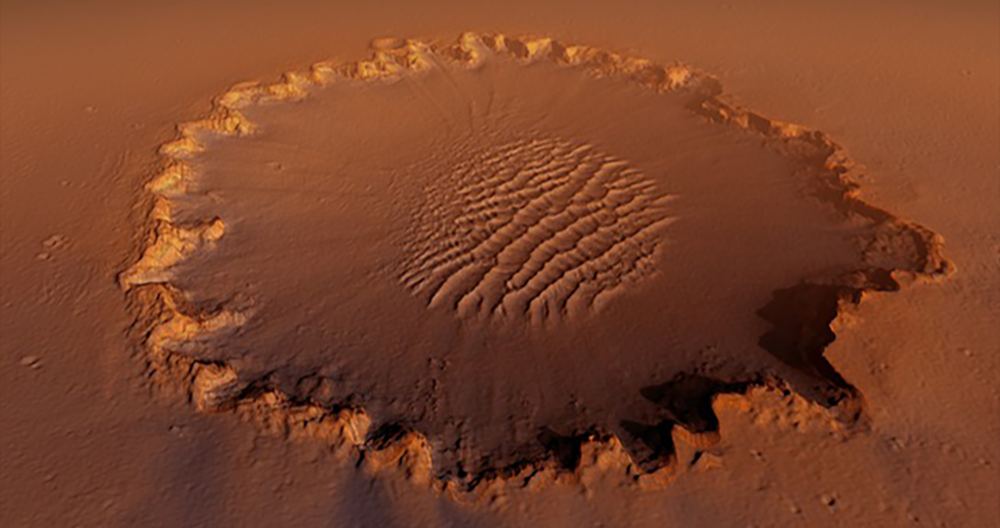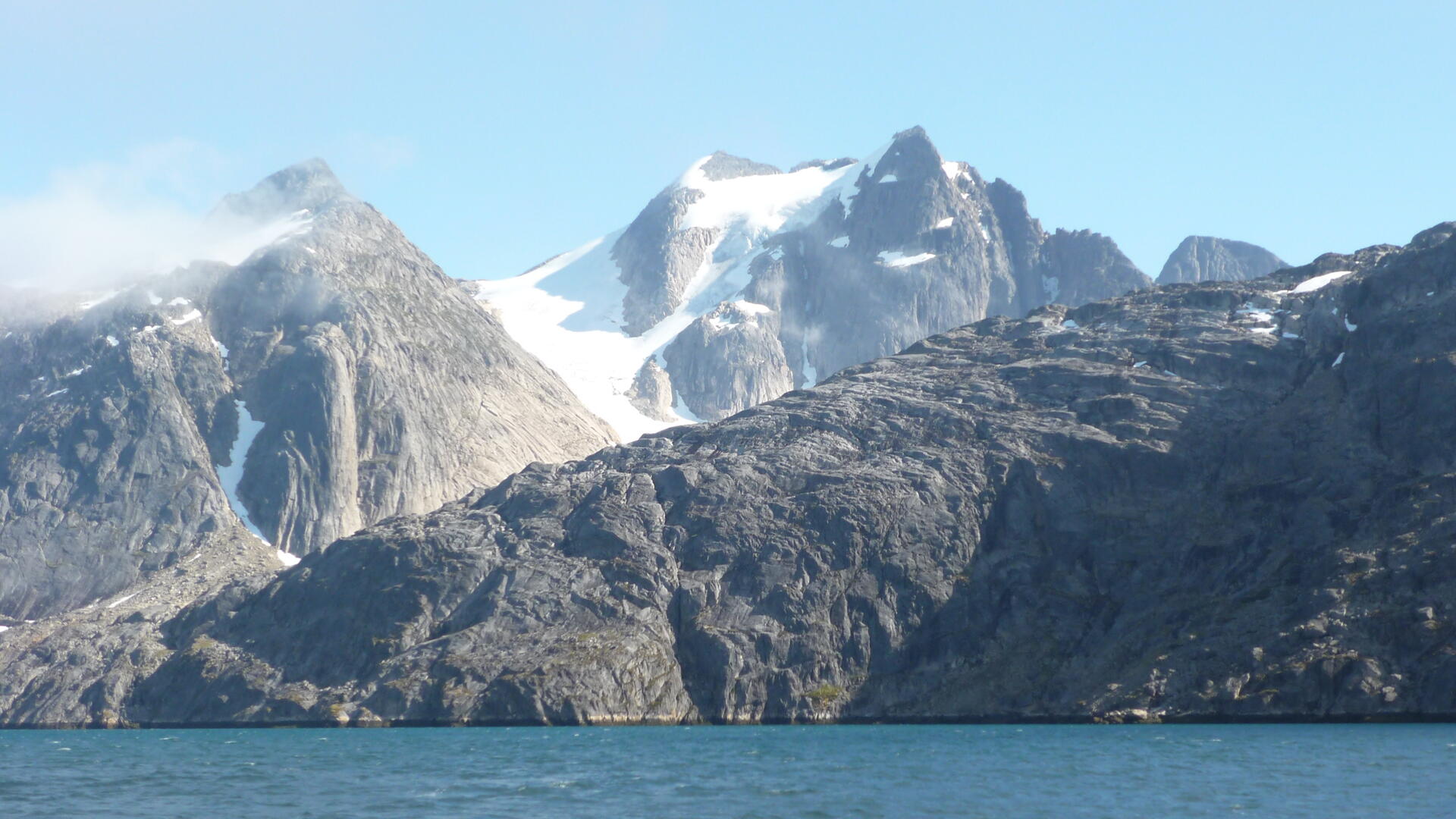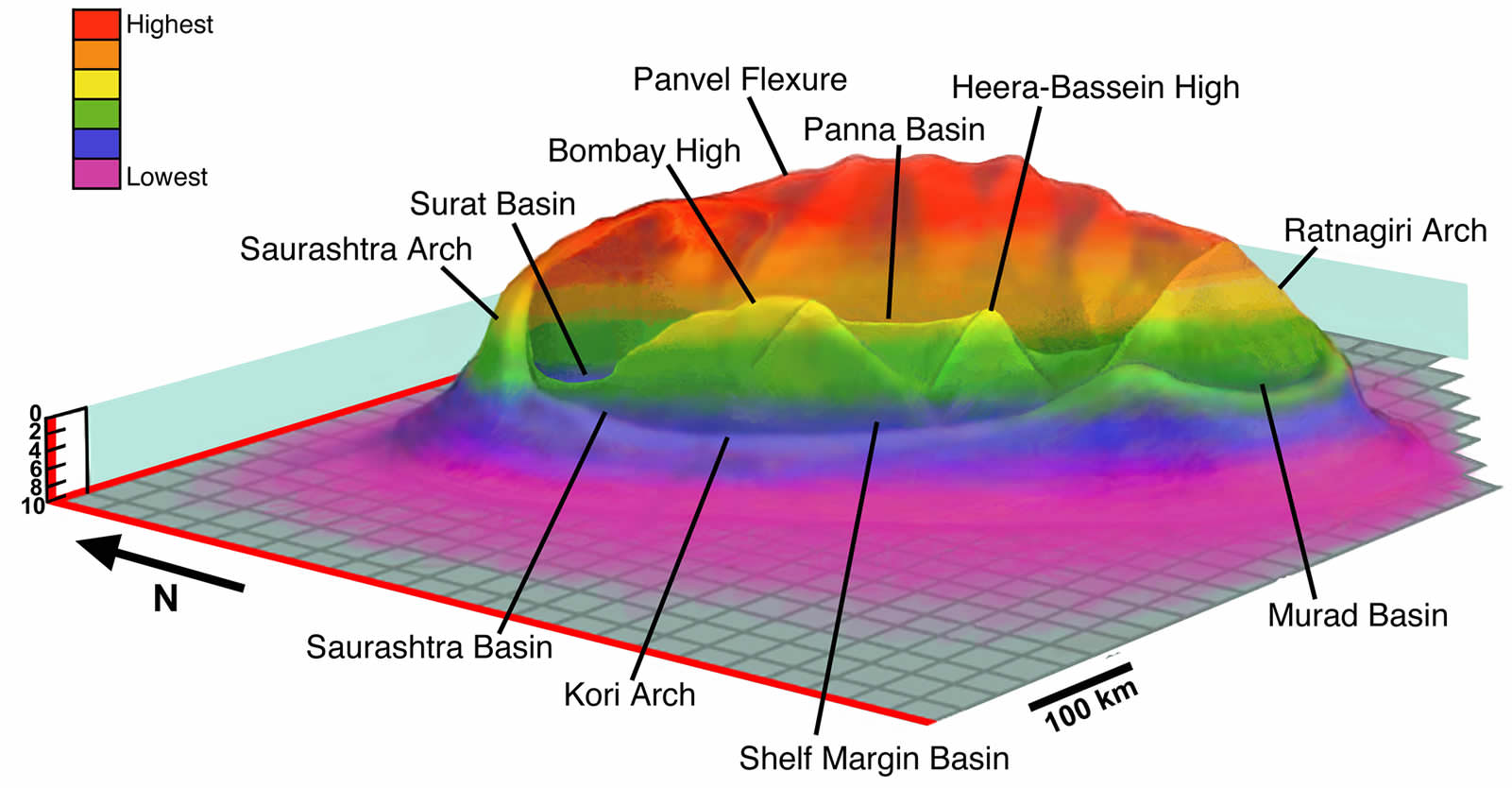[/caption]
A huge, mysterious basin off the coast of India could be the largest, multi-ringed impact crater ever found on Earth. And if a new study is right, this impact may supercede the one that created the Chicxulub crater off Mexico’s Yucatán Peninsula as what may have been responsible for killing the dinosaurs 65 million years ago. Sankar Chatterjee of Texas Tech University and a team of researchers have been studying a 500-kilometer-wide (300-mile-wide) depression on the Indian Ocean seafloor which was likely created by a bolide perhaps 40 kilometers (25 miles) in diameter. Such an event would have triggered worldwide climate changes, including intensified volcanism, that led to mass extinction.
Since the 1990’s the leading candidate for what killed the dinosaurs was a ten-kilometer-wide (six-mile-wide) asteroid thought to have carved out the Chicxulub crater. This impact may have done the job, but if not, 300,000 later the impact that created the Shiva basin surely would have finished off large life on Earth.
The massive Shiva basin, a submerged depression west of India that is intensely mined for its oil and gas resources. Some complex craters are among the most productive hydrocarbon sites on the planet.
“If we are right, this is the largest crater known on our planet,” Chatterjee said. “A bolide of this size, creates its own tectonics.”
However, some geologists have disputed whether the Shiva depression was created by an impact, or if it is just a hole in Earth’s crust, possibly created by volcanism. Christian Koeberl, a geochemist at the University of Vienna in Austria, has been adamant in the past that Shiva is not an impact crater. He said not only is there no evidence of impact in the case of Shiva, there is no crater structure. He calls Shiva, “a figment of imagination.”
“There’s not even ambiguous evidence, or inconclusive evidence,” says Koeberl. “There are a couple of people that keep pushing for some crater in the Indian Ocean, but this is inconsistent not only with the regional geology and geophysics, but also with anything we know about impact cratering.”
But Chatterjee feels sure that Shiva is an impact crater and said the geological evidence is dramatic. Shiva’s outer rim forms a rough, faulted ring some 500 kilometers in diameter, encircling the central peak, known as the Bombay High, which would be 3 miles tall from the ocean floor (about the height of Mount McKinley). Most of the crater lies submerged on India’s continental shelf, but where it does come ashore it is marked by tall cliffs, active faults and hot springs. The impact appears to have sheared or destroyed much of the 30-mile-thick granite layer in the western coast of India.
If the huge depression was created by an impact, Earth’s crust at the point of collision would have been vaporized, leaving nothing but ultra-hot mantle material to well up in its place. It is likely that the impact enhanced the nearby Deccan Traps volcanic eruptions that covered much of western India. What’s more, the impact broke the Seychelles islands off of the Indian tectonic plate, and sent them drifting toward Africa.
The team hopes to go India later this year to examine rocks drill from the center of the putative crater for clues that would prove the strange basin was formed by a gigantic impact.
“Rocks from the bottom of the crater will tell us the telltale sign of the impact event from shattered and melted target rocks. And we want to see if there are breccias, shocked quartz, and an iridium anomaly,” Chatterjee said. Asteroids are rich in iridium, and such anomalies are thought of as the fingerprint of an impact.
Read the Abstract
Source: Geological Society of America



